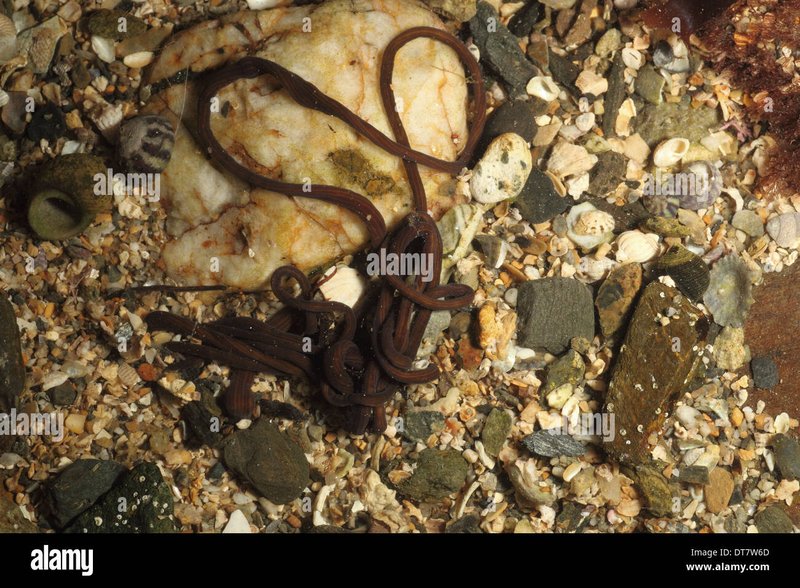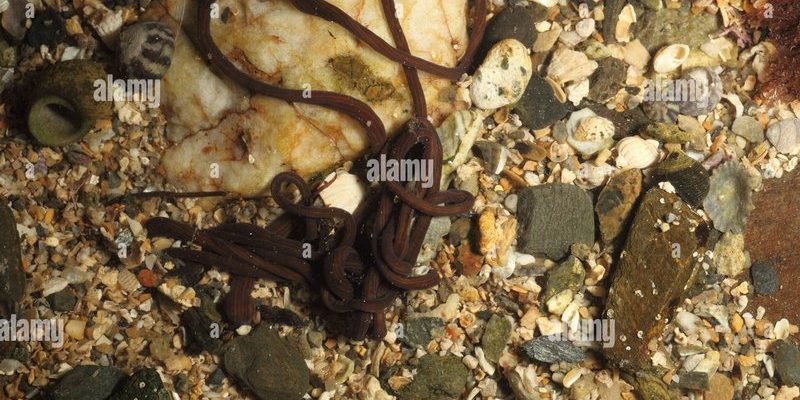
When you plan to observe bootlace worms, you’re stepping into a world where care and respect for the environment are paramount. Picture yourself kneeling by the water’s edge, intrigued by the sights and sounds around you. The thrill of discovering these worms can be tempered by the need for safety, both for you and the delicate ecosystems you’re exploring. This guide will walk you through the best practices for observing bootlace worms while protecting yourself and their habitat.
Understanding Bootlace Worms
Bootlace worms, or *Lineus longissimus*, are remarkable creatures found in tide pools along various coastal areas. They have a unique appearance that can be mistaken for a strand of seaweed, thanks to their long, slender bodies. These worms are segmented and can often be seen writhing in the water. They live in the mud and sand, where they burrow and hunt for food, primarily small crustaceans.
The vibrant coloration of bootlace worms is part of their charm. They can showcase shades of pink, blue, and yellow, creating a beautiful sight as they move gracefully in the water. You might be wondering how to safely see these mesmerizing beings without harming them or yourself. Let’s dive into the best ways to observe bootlace worms without disrupting their environment.
Choosing the Right Time and Place
Timing is crucial when observing bootlace worms. These creatures are most active during low tide, so planning your visit around tidal schedules is essential. Typically, early morning or late afternoon tide pools offer the best chances to see them. Be sure to check the tide tables for your area; there are numerous online resources available that can help.
When it comes to location, seek out rocky shores and sandy beaches where tide pools are abundant. Look for areas with little human activity, as this will help preserve the habitat. Areas with fewer predators are also ideal for spotting bootlace worms. Honestly, a little research on local tide pool zones can save you from wasted trips and increase your chances of observing these incredible creatures.
Safety Precautions for Observing Tide Pools
Before heading out, there are several safety measures you need to take. Tide pool environments can be slippery and uneven, so wearing sturdy footwear with good grip is essential. Water shoes are a great option.
Also, don’t forget to bring along a towel or blanket to sit on while you observe! This will keep you dry and comfortable. Another important safety tip is to stay aware of your surroundings. Watch for incoming waves and keep an eye on the tide. It changes quickly, and you don’t want to be caught off guard.
Lastly, consider bringing a friend along. Not only is it safer to explore in pairs, but sharing the experience makes it even more enjoyable. You’ll have someone to marvel at the wonders with while keeping an eye out for potential dangers.
How to Observe Bootlace Worms Without Disturbance
When you finally spot a bootlace worm, you might feel an urge to reach out and touch it. But here’s the thing: touching them can be harmful. Instead, observe them from a distance. Take your time and appreciate their movements in the water. You can bring a camera to capture the moment, but avoid using a flash, as bright lights can startle them.
If you want to enhance your experience, consider bringing along a small notepad to jot down your observations. Note things like their color, movement, and even patterns in their behavior. This practice not only enriches your understanding but also fosters a deeper connection with nature.
Additionally, using a magnifying glass can help you examine the worms without getting too close. The details of their bodies are fascinating, and viewing them through a lens can reveal more than the naked eye can see.
Respecting the Ecosystem
Respect is key when it comes to observing bootlace worms and their habitats. Tide pools host delicate ecosystems that support a variety of life forms. You might find countless species interacting right alongside the bootlace worms. Avoid stepping on or disturbing any plants or animals that you see.
If you want to enrich your visit further, take the time to learn about the other creatures inhabiting the tide pools. You might spot crabs, sea stars, and anemones. By understanding the interconnectedness of these species, you can appreciate the value of protecting their home.
Also, be mindful of litter. If you see trash, consider picking it up. Leaving the area cleaner than you found it contributes to the well-being of the environment and future visitors.
Tools and Tips for the Best Experience
Having the right tools can make your tide pool experience even more enjoyable. Here are some essential items to consider bringing along:
- Waterproof bag: To keep your belongings safe and dry.
- Field guide: A guidebook on tide pool creatures can help you identify various species.
- Binoculars: For spotting distant creatures without getting too close.
- Notebook: To record observations and thoughts about your findings.
- Camera: To capture the beauty and details of the tide pool experience.
Honestly, preparation makes all the difference. By equipping yourself properly, you’re setting the stage for a fulfilling and safe adventure.
After the Adventure: Reflecting on Your Experience
Once you’ve explored the tide pools and observed bootlace worms, take a moment to reflect on your experience. What intrigued you the most? Were there any surprises along the way? Sharing your observations with friends or family can help spread awareness about these remarkable creatures and the importance of their habitats.
You could even consider volunteering for local conservation efforts to help protect coastal ecosystems. Engaging with your community can further enrich your understanding and connection to nature. It’s amazing how a simple day of exploration can ripple out into greater awareness and care for the environment.
Observing bootlace worms can be a whimsical and enlightening experience, and it’s even more rewarding when done safely and respectfully. Just remember, nature has its own rhythm and pace. By taking the time to explore thoughtfully, you’ll gain a deeper appreciation for the wonders of the natural world.
Through this guide, I hope you feel empowered to embark on your tide pool adventure. Grab your gear, take a friend, and enjoy the beauty of bootlace worms in their vibrant underwater world. Happy exploring!

